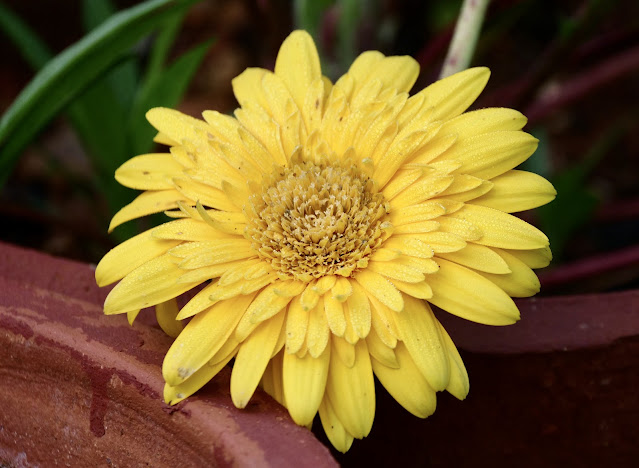
I gathered together flowers which were photographed at different times of the day, starting from the day break to dusk and arranged them in an order starting with the one taken at day break.
The play of light on the colours made an impression about the effects of interaction. The flowers receive the light in different intensity and accordingly they appear differently.
I have been recently taking photos of the same flowers at different times of the day in the automatic setting with the same camera and lens to get a glimpse of the light effects on the flowers. I need to take some more to get some clarity. As days turn out to be cloudy sometimes, the variability of light on the consecutive days at the same time alters the complexion of photographs. I want to pursue till light conditions were similar at least on three days. A flower also changes its brightness of its petals once it begins to fade away by about three days or so.
I got one message form the preliminary observations. At day break the temperature was about 24 degree celsius and at mid day about 28 to 29 and at dusk it was about 27 degrees. There were days when the day temperature at mid day went up to 32 degrees. As the winter sets in, there will be a consistency in the day temperature in the consecutive days.
The flowers are conditioned by the moisture in the soil, humidity and temperature and the sunlight of the day. At sunrise and sunset the light falls tangentially and from about 10 am to 3 pm the light falls vertically on the flowers. I have been focussing on flowers which do not receive any shade from the foliage above. The pants were watered each evening to wet the soil well. The plants in pots were excluded from the observations.
Why does this engage my attention!
I suspect that the external ambience has a noticeable effect on the complexion of flowers.
I got enthused to pursue this observations as two recent engagements with parents on the home ambience gave me a first hand information about the 'loosely structured' home environment for pre-school children. The attention to monitor the home environment seemed inconsistent and inadequate.
A pre-school child acquires his or her personality and grows up with the inherited archetype in the subconscious level. The science of epigenetic perspectives gives us enough indication that it is the confluence of 'nature' and 'nurture' which create the conduct and character of a child.
If a flower has a variable appearance and complexion conditioned by its ambience, this will similarly apply to formation of a pre-school child. There is enough evidence to suggest that from the emotional bonding that starts between a mother and her infant by about three months followed by a chain of events and experiences, form a pre-school child as a person.
If so, parenting has to be intentional, structured, audited and revised by every family at least on a monthly basis to give the optimum supportive environment to a child in the pre-school years.
Anna and I recently put down our thoughts on this theme of parenting of a pre-school child in a publication of ASHIRVAD, an initiative for child development in its 40th anniversary.
The pre-school child in a home is like a flower fresh, fragile and fragrant!
M.C.Mathew(text and photo)










No comments:
Post a Comment